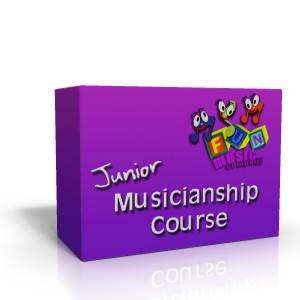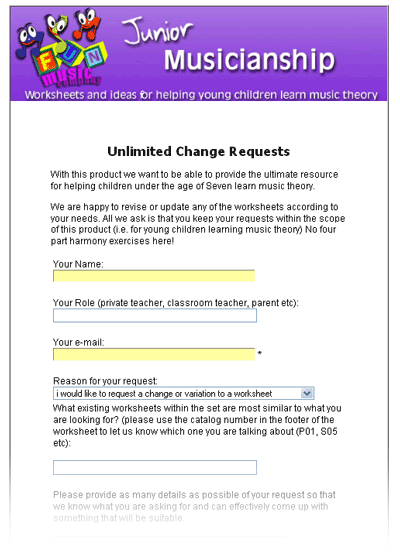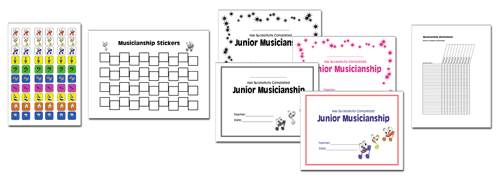Congratulations – instructions on how to download the pdf of the strategies and sample worksheets are on their way to you!
Now the next step… making life easy for yourself when teaching theory to young children
You are about to discover what else we have at the Fun Music Company to assist you in helping make music theory fun for you to teach!
Firstly, before I tell you about the Junior Musicianship course I’d just like to share a little bit about our mission at the Fun Music Company.
The Fun Music Company wants to make music learning fun for children. But why? What benefits do we receive for doing so? And what’s the point in making it fun?… sure sometimes it should be fun, but fun shouldn’t be the core emphasis should it?
Here is the point:
When it’s fun children learn more.
And when its fun children want to keep learning.
And Music is important for children.
Music is not just another activity. Music is absolutely vital for children, and at the Fun Music Company we are doing research right now into the benefits that children receive from music instruction at an early age. Its way to early to share any results, but I can tell you that we intend to prove the links between children learning music and all sorts of benefits in children’s lives.
Our mission is to impact positively the lives of millions of children through music.
Now if children have fun learning music, won’t they want to do more of it?
And if young children have improved social skills, improved memory and concentration aren’t they more likely to have more fulfilling lives as older children, teenagers and adults?
Well that’s our mission. We’re there to help you as music teachers to make music learning fun, because its our little way that we can help. If we teach music ourselves we can impact maybe 50, 100 or even 200 students a year. If we run a school or multiple schools perhaps we could reach 1,000. However with the magic of the internet we can help teachers and parents throughout the world spread the magic of music education.
Introducing one way in which we do this…
Designed especially to help young children learn music theory concepts
In order to get an integrated approach, an approach like I told you about on the last page you have to have two things:
- An infinite supply of worksheets that match exactly the concepts you are teaching
- A sense of enthusiasm and an attitude for making it fun!
Now we can help with #1… but #2 you’ll have to contribute a little! However we are here to help you with that as well through our continual support pages at the Music Teachers Blog and in the members area of the Fun Music Company website.
What students is this product suitable for?
This product is designed for young students, learning music theory in classes, small groups or in one-on-one tuition. It is ideal for children between the ages of 4-7 years.
Now, what was that about an infinite supply?
Yes, that is what this product includes. We don’t ship you anything, you simply print these out on your own computer. And you can do so for an entire year.
Why is this better than a book?
When you use a theory book you virtually have to teach a concept in the order that it is given in the book. With self-printed worksheets you choose what and when to print out the worksheets for your children, so it is infinitely flexible
Now what is included?
OK – In this product there are over 140 worksheets in these categories
Pitch – Drawing Notes
examples include:
Pitch – Note Identification
examples include:
Pitch – Keyboard Connections
examples include:
Rhythm – Drawing Rhythmic Symbols
examples include:
*All worksheets supplied with both American and European Names
Rhythm – Identification of Notes and Rests
examples include:
*All worksheets supplied with both American and European Names
Rhythm – Understanding Rhythmic Concepts
examples include:

symbols – Drawing Musical Symbols
examples include:

Symbols – Understanding Musical Symbols
examples include:

Where did you get these categories from?
What we have done is gone through all the basic texts we can find – tutors for teaching piano, recorder, violin and any other instrument that YOUNG children play, and we’ve looked at all the concepts that are included. Then we’ve attempted to write a worksheet that teaches just that concept.
What we did next was take those concepts and attempt to group them in the most practical, easy way that will make it really easy for you to find the worksheet you need, first time, every time.
Want a complete List of everything included?
Here is a complete listing of the worksheets included in the Junior Musicianship System, at the time of its launch (December 2008). It should and will grow as teachers begin using it and submitting requests for variations and improvements (see bonus #1 Below!)
|
|
Category |
Sub |
Concept |
|
|
Pitch |
Drawing |
Tracing |
|
P02 |
Pitch |
Drawing |
Tracing |
|
P03 |
Pitch |
Drawing |
Tracing |
|
P04 |
Pitch |
Drawing |
Tracing |
|
P05 |
Pitch |
Drawing |
Drawing |
|
P06 |
Pitch |
Drawing |
Drawing |
|
P07 |
Pitch |
Drawing |
Tracing |
|
P08 |
Pitch |
Drawing |
Treble |
|
P09 |
Pitch |
Drawing |
Treble |
|
P10 |
Pitch |
Drawing |
Treble |
|
P11 |
Pitch |
Drawing |
Treble |
|
P12 |
Pitch |
Drawing |
Treble |
|
P13 |
Pitch |
Drawing |
Treble |
|
P14 |
Pitch |
Drawing |
Treble |
|
P15 |
Pitch |
Drawing |
treble |
|
P16 |
Pitch |
Drawing |
Treble |
|
P17 |
Pitch |
Drawing |
Treble |
|
P18 |
Pitch |
Drawing |
Treble |
|
P19 |
Pitch |
Drawing |
Treble |
|
P20 |
Pitch |
Drawing |
Treble |
|
P21 |
Pitch |
Drawing |
Treble |
|
P22 |
Pitch |
Drawing |
Treble Notes |
|
P23 |
Pitch |
Drawing |
tracing G |
|
P24 |
Pitch |
Drawing |
drawing G |
|
P25 |
Pitch |
Drawing |
Treble |
|
P26 |
Pitch |
Drawing |
Treble |
|
P27 |
Pitch |
Drawing |
treble |
|
P28 |
Pitch |
Drawing |
Treble |
|
P29 |
Pitch |
Drawing |
Treble |
|
P30 |
Pitch |
Drawing |
Treble |
|
P31 |
Pitch |
Drawing |
Treble |
|
P32 |
Pitch |
Drawing |
Draw |
|
P33 |
Pitch |
Drawing |
Draw |
|
P34 |
Pitch |
Drawing |
Draw |
|
P35 |
Pitch |
Drawing |
Bass Notes |
|
P36 |
Pitch |
Drawing |
Bass Notes |
|
P37 |
Pitch |
Drawing |
Bass Notes |
|
P38 |
Pitch |
Drawing |
Bass Notes |
|
P39 |
Pitch |
Drawing |
Bass Notes |
|
P40 |
Pitch |
Drawing |
Bass Notes |
|
P41 |
Pitch |
Drawing |
bass notes |
|
P42 |
Pitch |
Drawing |
Bass Notes |
|
P43 |
Pitch |
Drawing |
Bass Notes |
|
P44 |
Pitch |
Drawing |
bass Notes |
|
P45 |
Pitch |
Drawing |
Bass Notes |
|
P46 |
Pitch |
Drawing |
bass notes |
|
P47 |
Pitch |
Drawing |
Bass Notes |
|
P48 |
Pitch |
Drawing |
Bass notes |
|
P49 |
Pitch |
Drawing |
Bass notes |
|
P50 |
Pitch |
Drawing |
Trace C,D, |
|
P51 |
Pitch |
Drawing |
Trace low |
|
P52 |
Pitch |
Drawing |
Trece F in the bass to G in the treble |
|
P53 |
Pitch |
Drawing |
draw F in |
|
P54 |
Pitch |
Keyboard |
Treble |
|
P55 |
Pitch |
Keyboard |
Treble |
|
P56 |
Pitch |
Keyboard |
Treble |
|
P57 |
Pitch |
Keyboard |
Treble |
|
P58 |
Pitch |
Keyboard |
Treble |
|
P59 |
Pitch |
Keyboard |
Bass Notes |
|
P60 |
Pitch |
Keyboard |
Bass Notes |
|
P61 |
Pitch |
Keyboard |
Bass Notes |
|
P62 |
Pitch |
Keyboard |
Bass Notes |
|
P63 |
Pitch |
Keyboard |
Bass Notes |
|
P64 |
Pitch |
Keyboard |
Bass Notes |
|
P65 |
Pitch |
Keyboard |
Bass Notes |
|
P66 |
Pitch |
Keyboard |
Grand |
|
P67 |
Pitch |
Keyboard |
Grand |
|
P68 |
Pitch |
Keyboard |
Grand |
|
P69 |
Pitch |
Keyboard |
Grand |
|
P70 |
Pitch |
Note |
Name the |
|
P71 |
Pitch |
Note |
Name the |
|
P72 |
Pitch |
Note |
Name the |
|
P73 |
Pitch |
Note |
name the |
|
P74 |
Pitch |
Note |
name the |
|
P75 |
Pitch |
Note |
Name the |
|
P76 |
Pitch |
Note |
Name the |
|
P77 |
Pitch |
Note |
Name the |
|
P78 |
Pitch |
Note |
Name the |
|
P79 |
Pitch |
Note |
name the |
|
P80 |
Pitch |
Note |
Name the |
|
P81 |
Pitch |
Note |
Name the |
|
P82 |
Pitch |
Note |
Name the |
|
P83 |
Pitch |
Note |
Name the |
|
P84 |
Pitch |
Note |
Name the |
|
P85 |
Pitch |
Note |
name the |
|
R01 |
Rhythm |
Drawing |
Colouring in notes to make crotchets |
|
R02 |
Rhythm |
Drawing |
Colour and trace crotchets |
|
R03 |
Rhythm |
Drawing |
Trace |
|
R04 |
Rhythm |
Drawing |
Tracing |
|
R05 |
Rhythm |
Drawing |
Trace and |
|
R06 |
Rhythm |
Drawing |
Trace |
|
R07 |
Rhythm |
Drawing |
Tracing |
|
R08 |
Rhythm |
Drawing |
Trace |
|
R09 |
Rhythm |
Drawing |
trace |
|
R10 |
Rhythm |
Drawing |
Colour, Trace, Draw Quavers |
|
R11 |
Rhythm |
Drawing |
Colour, trace, draw single quaver |
|
R12 |
Rhythm |
Drawing |
trace and |
|
R13 |
Rhythm |
Drawing |
trace and |
|
R14 |
Rhythm |
Drawing |
Trace and |
|
R15 |
Rhythm |
Drawing |
Trace and |
|
R16 |
Rhythm |
Drawing |
Trace and |
|
R17 |
Rhythm |
Drawing |
Trace and |
|
R18 |
Rhythm |
Identification |
Circle all |
|
R19 |
Rhythm |
Identification |
Circle all |
|
R20 |
Rhythm |
Identification |
Circle all |
|
R21 |
Rhythm |
Identification |
Circle all |
|
R22 |
Rhythm |
Identification |
Cirlce all the rests |
|
R23 |
Rhythm |
Identification |
Circle all |
|
R24 |
Rhythm |
Identification |
Circle the |
|
R25 |
Rhythm |
Identification |
Match |
|
R26 |
Rhythm |
Identification |
Match Rest |
|
R27 |
Rhythm |
Understanding |
Match |
|
R28 |
Rhythm |
Understanding |
Match |
|
R29 |
Rhythm |
Understanding |
Match |
|
R30 |
Rhythm |
Understanding |
Simple |
|
R31 |
Rhythm |
Understanding |
Simple |
|
R31 |
Rhythm |
Understanding |
3/4 and |
|
R32 |
Rhythm |
Understanding |
Complete |
|
R33 |
Rhythm |
Understanding |
Complete |
|
R34 |
Rhythm |
Understanding |
Time |
|
R35 |
Rhythm |
Understanding |
Rhythm to SimpleDuple Etc |
|
S01 |
Symbols |
Drawing |
Tracing |
|
S02 |
Symbols |
Drawing |
Tracing |
|
S03 |
Symbols |
Drawing |
Tracing |
|
S04 |
Symbols |
Drawing |
Drawing |
|
S05 |
Symbols |
Drawing |
Tracing |
|
S06 |
Symbols |
Drawing |
trace and |
|
S07 |
Symbols |
Drawing |
Trace and |
|
S08 |
Symbols |
Drawing |
Drawing Bb |
|
S09 |
Symbols |
Drawing |
Drawing Bb |
|
S10 |
Symbols |
Drawing |
Drawing F# |
|
S11 |
Symbols |
Drawing |
Drawing F# |
|
S12 |
Symbols |
Understanding |
Matching C |
|
S13 |
Symbols |
Understanding |
matching |
|
S14 |
Symbols |
Understanding |
Copy |
|
S15 |
Symbols |
Understanding |
Copy extra |
|
S16 |
Symbols |
Understanding |
Matching Misc Symbols |
|
S17 |
Symbols |
Adding |
Adding |
|
S18 |
Symbols |
Adding |
Adding |
|
S19 |
Symbols |
Adding |
Adding |
|
S20 |
Symbols |
Adding |
Adding |
|
S21 |
Symbols |
Understanding |
Matching |
Want some samples?
They are on their way to you via email If you don’t get them simply click here to download them to your computer and have a look.
How does it work?
All you get is an online membership. You enter your username and password here:
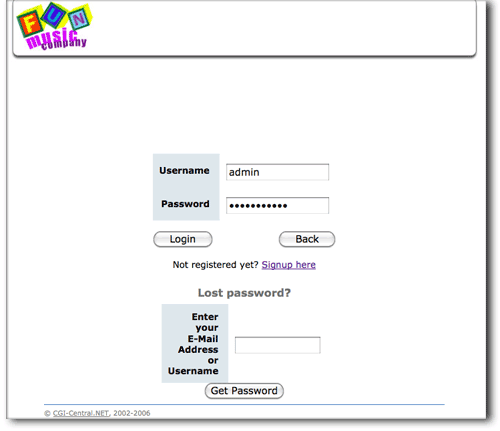
This is the same login that you have for all Fun Music Company products.
Once you’ve logged in the main menu page for this product looks like this:
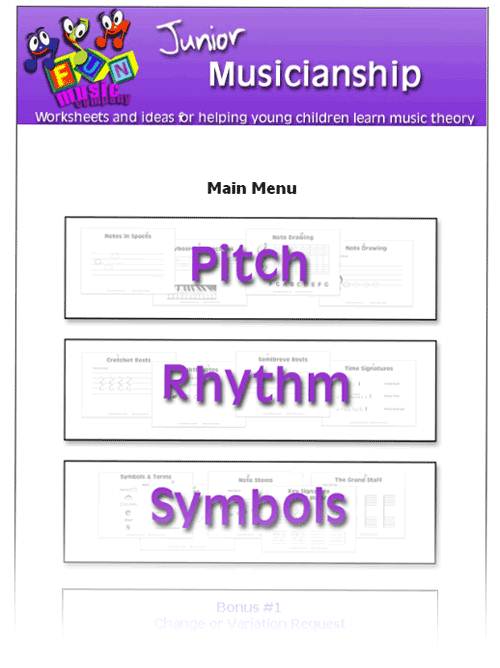
Where you can quickly choose between the three major categories included – being Pitch, Rhythm and Symbols.
Once you’ve chosen the category you’ll get a further submenu with each of the topics listed, and once you’ve chosen a category you will see a thumbnail of each worksheet, along with a printing button that you simply click to load it into your adobe acrobat reader. Hit the print button and away you go. The whole process of choosing a worksheet is designed to be done in about 10-30 seconds!

Remember on the last page when I told you about the "perfect world" scenario where you’d have an inexhaustible supply of worksheets?
Well that is completely possible with the Junior Musicianship System. You can spend a few minutes at the start of every day or week loading up your folders with all your favourite worksheets, as you can access the system 24/7 from any computer, anywhere in the world!
You could even have a computer and printer set up IN your teaching studio if you wish, so that you can print them out "on the fly" as needed in your lessons.
Now what was that about extra income?
This is something to think about. If you no longer need to provide a theory book for your students, or the parents don’t have to, won’t they be willing to pay a small fee?…
The average theory book costs around $20 – $30. Now all you have to do is add a yearly "printing fee" to your lesson account – and if you provide a folder and tell the parents that they get at least one worksheet every week, they’ll be more than happy to pay it.
Of course you can charge whatever you want, but for arguments sake lets say that you decide that $25 per year is reasonable annual fee for your children. And for the sake of this example you have 50 students, and you get 25 new ones over the course of the year.
| Total Fees collected (75 x $25) | $1875 |
| Buy 75 Folders from a stationary store for $2 each | ($150) |
| Cost of printer ink/toner and Photocopying | ($500) |
| Cost of years subscription | ($49.90) |
| Total Extra Income for the year |
$1175 |
Of course, its up to you whether you want to charge – you could always decide to charge $5, or $10 per school term or semester – The choice is yours!
What if the Junior Musicianship System doesn’t have the worksheet I need?
YOU get to be involved in the development process.
Yes, that’s right. We don’t feel that we are necessarily qualified to develop the right resources for YOUR music lessons, as everyone has different needs. Therefore we’ve come up with a way to offer you what you need.
Ready to get started? – Click here to take action and get the Junior Musicianship Course
How much does this cost again?
The price is $49.90 for a lifetime membership. You have access to the worksheets and can come back again and again to download more worksheets.
Answered your question? – Click here to take action and get started
What If I don’t like it? Can I get my money back?
Of course you can! We have always offered a 100%, unconditional money back guarantee on all our products at the Fun Music Company. If any time in the first 90 days you feel that the Junior Musicianship system is not for you then all you have to do is let us know and we’ll instantly refund your money – no questions asked.
Answered your question? – Click here to take action and get started
Is this genuine? Or is this another internet scam?
The internet gives you quite literally access to a world full of resources and tools – many of them free, and many of them where you have to pay, and you never really know what websites are trying to scam you into taking your money for no good reason.
If you’ve ever been scammed on the internet then you’ve got good reason to be fearful – however it isn’t the internet that scammed you… it’s a person!
The people who are behind this page are simple – My husband and I. We have designers, artists and others who help, but when you buy something from our company you are buying from us directly. We don’t hide behind a big corporate structure that doesn’t care about you and your needs.
You can even call us – check out our Fun Music Company contact page and you’ll find phone numbers that connect with us in Australia (we don’t answer the phones 24/7, as we do need to sleep sometimes!). We are a proprietory Registered Company in Australia and comply will all relevant tax laws.
Answered your question? – Click here to take action and get started
My final gift for today…Three Ways to instantly retain more students
On the last page I promised that I’d share with you three things that you could do instantly to retain more students. If you are a private music teacher then student retention is obviously really important, as if you’re students don’t stay you’ll go broke! However it is also really important for every other sort of teacher as well, because if students WANT to come to your lessons rather than HAVE to come to them then you are going to have a much more fulfilling, happy and easy time as a teacher or helper in their music sessions.
Instead of three things that you can do, I’m going to call them three decisions:
Decision #1 You can decide to be happy all the time
If you are happy inside, and you make yourself a rule that whenever you are breathing, you are going to be happy your life will never be the same. Imagine your work if you walk in with a smile, you approach everything with good humor and always have a joke ready when it’s appropriate. You’ll find your days going faster and more enjoyably straight away. I know that there are things and trials that happen in your life that make you unhappy, but how we cope with them is what leads to the results that we achieve. Being happy is a decision – and one that I’ve come to find that no matter what stresses and trials happen in your life you can overcome almost any obstacle if you decide to be happy.
Decision #2 You can decide to send praise and not criticism
Praise is an amazing tool – The gift of saying something positive to someone and “catching them doing something right” can give more than you can possibly imagine. So many times the educational system is set up to “catch people doing something wrong” – that it seems like this becomes the right thing to do. However, if for no particular reason you said to a student:
"Mary, I really loved the way that you helped Mrs Jones yesterday"
Or "Thankyou Tom, I really appreciate your good manners"
You might get nothing back, and it might seem pointless, however in the long term deciding to send praise will always give you far more than you can possibly imagine. Set yourself a goal to say something positive to every person you encounter during a day, or give five great compliments today. Try it – you’ll be amazed at how great it makes you feel!
Decision #3 You can decide to take action and help yourself
I’ve done a lot of reading on self development (as you’ll probably pick up from some of the way I write my articles and blogs) and one thing I’ve noticed is that the ability to take action is one of the key skills that successful people have.
Unsuccessful people go through life always blaming others for their situation, blaming the economy or their school or their parents. Successful people always thrive in just about any situation, and one key point is their ability to take action to DO something about their current situation.
So if you teach young children music theory then an action you can take right now is to sign up for a yearly membership to the Junior Musicianship System.
You’ll be giving yourself the gift of:
- A choice of over 140 worksheets that you can print out and use tomorrow for young children’s music lessons
- The knowledge that you can request changes and updates to the worksheets if they don’t meet your needs for your young children
- Ideas and strategies to keep your children inspired, and keep yourself happy, enthused and excited about sharing music with children
Order the Junior Musicianship System NowClick here if you’ve never ordered anything from the Fun Music Company before Click here if you HAVE purchased other products from the Fun Music Company |
So thank you for visiting today – Keep in touch via our websites and let me know how you are going with inspiring young children about music theory, and if you’re happy to stay on our mailing lists we’ll keep in touch about other products that we have available to help you achieve success in music education for all levels.
Enjoy your music
Janice Tuck


